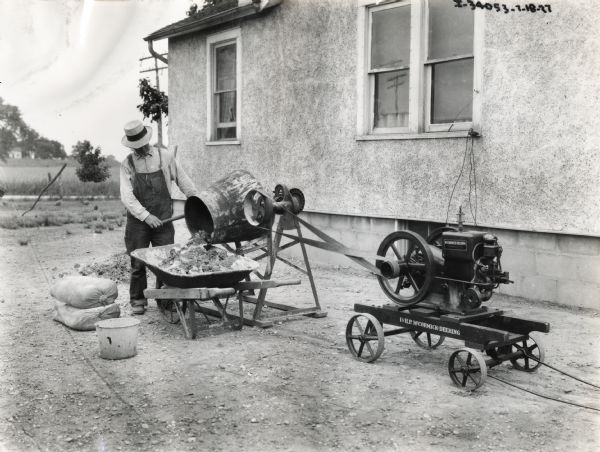The History of Mud Jacking
Mud jacking, also known as slab jacking or concrete leveling, has been used for decades as a reliable method to lift and stabilize sunken concrete. This cost-effective and efficient technique has evolved significantly over time, improving both materials and application methods to provide long-lasting solutions for concrete repair.

Early Beginnings
The origins of mud jacking can be traced back to the early 20th century. It was initially developed as an alternative to costly and labor-intensive concrete replacement. Early methods involved using a mixture of soil, water, and cement to create a slurry that could be pumped beneath sunken slabs, raising them back to their original position. This process quickly gained popularity due to its ability to restore concrete without requiring full demolition and reconstruction.
Post-War Advancements
During the mid-20th century, as infrastructure expanded and urban development accelerated, mud jacking became a preferred technique for repairing roads, sidewalks, and airport runways. Engineers refined the method by improving the slurry mixture and using specialized pumps to inject material more precisely beneath slabs. These advancements made the process faster, more reliable, and increasingly popular for both residential and commercial applications. As cities expanded, municipal governments turned to mud jacking to maintain and restore aging infrastructure without excessive costs or prolonged construction times.
Modern Innovations
In recent decades, mud jacking has continued to evolve with advancements in materials and equipment. Traditional mud jacking mixtures, which often included Portland cement, have been replaced in some applications with more sustainable alternatives, such as limestone-based slurry. These modern formulations provide improved durability and reduce environmental impact by lowering CO2 emissions. The use of limestone slurry also prevents the long-term shrinkage that can occur with traditional cement-based mixtures, leading to more stable and enduring repairs.
Additionally, precision equipment and advanced pumping systems allow for better control over material placement, minimizing the risk of overcorrection and ensuring a more uniform lift. The introduction of polyurethane foam injection, an alternative method to traditional mud jacking, has also expanded options for concrete leveling, though it comes with a higher cost and potential environmental concerns. While polyurethane foam is lightweight and fast-curing, it is derived from petrochemicals, making it less eco-friendly than traditional mud jacking materials.
Why Mud Jacking Remains Popular
Despite the emergence of newer techniques, traditional mud jacking remains a widely used solution due to its cost-effectiveness, reliability, and minimal disruption. Unlike full slab replacement, mud jacking is faster, more affordable, and extends the life of existing concrete, making it a preferred choice for homeowners, businesses, and municipalities alike. The ability to repair uneven surfaces with minimal downtime is a significant advantage, especially for high-traffic areas like driveways, warehouse floors, and commercial properties.
Mud jacking is also valued for its environmental benefits. By reusing existing concrete instead of replacing it, the process reduces construction waste and limits the demand for new concrete production, which is a major contributor to global CO2 emissions. Additionally, since mud jacking requires only small, strategic drill holes, it minimizes landscape and structural damage, preserving the surrounding environment.
Future of Mud Jacking
With ongoing advancements in material science and construction techniques, mud jacking is likely to continue evolving. Researchers and engineers are exploring even more sustainable slurry mixtures, incorporating recycled materials to further reduce environmental impact. Additionally, innovations in injection technology could lead to more precise applications, reducing material usage while enhancing the strength and longevity of repairs.
As urban infrastructure ages and the demand for cost-effective, environmentally friendly repair solutions grows, mud jacking is expected to remain an essential technique for concrete stabilization. Homeowners, businesses, and municipalities will continue to benefit from its affordability, sustainability, and efficiency in maintaining and restoring concrete surfaces.
Conclusion
From its early development to modern innovations, mud jacking has proven to be a valuable technique for concrete repair and restoration. With advancements in materials and equipment, it continues to be an efficient, sustainable, and affordable alternative to concrete replacement. As technology progresses, mud jacking will likely remain a cornerstone of the construction and repair industry for years to come.
Experience Modern Mud Jacking!
With custom built mud jacking trailers, MuddRuckers has 30 years of innovation behind us!
Get a QuoteExplore Costs